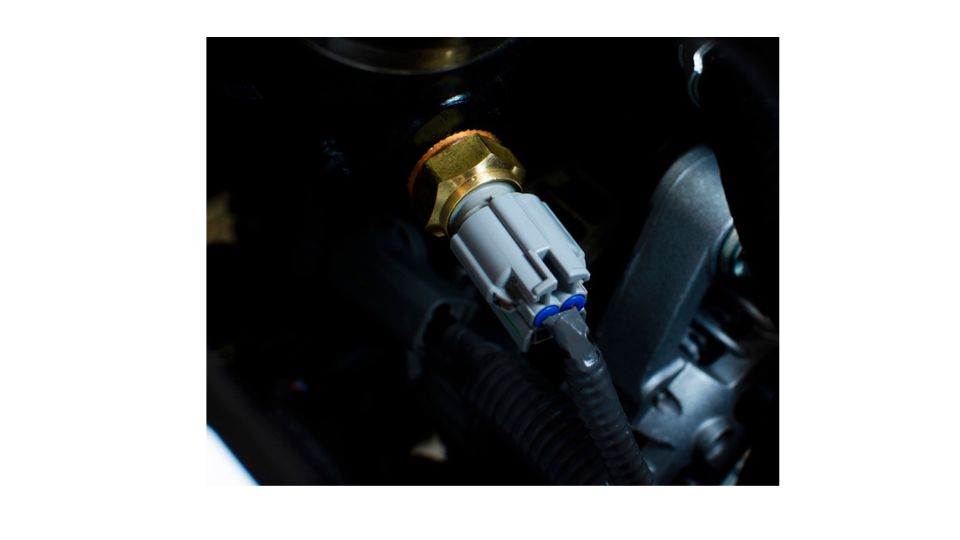If you own a Chevy Cruze, you may be affected by a serious issue. Several reports indicate that the Chevrolet Cruze’s temperature sensor could be inaccurate and misleading. This can have fatal consequences if the driver cannot recognize a problem before it becomes too late. But has there been a recall over the years? Let’s find out.
Is there a Chevy Cruze Temperature Sensor Recall
There is no Chevy Cruze temperature sensor recall. It’s possible that some Chevy Cruze owners have experienced issues with this component, but it’s not part of a larger campaign.
It may be possible that you’re experiencing an issue with your Chevy Cruze temperature sensor. You should have your vehicle looked at by a professional mechanic to determine if the problem is related to this component or something else.

Why Do Chevy Cruze Temperature Sensors Fail?
The main reason why chevy Cruze temperature sensors fail is due to heat. Most sensors have a maximum operating temperature that they can tolerate before they give out and stop working.
For example, a coolant temp sensor may be designed to work at 180 degrees Fahrenheit (82 degrees Celsius). If the temperature exceeds this, it will fail.
This is usually accompanied by an engine light on your dashboard, telling you that something is wrong with your car. If you’re experiencing any of these issues, it could be a sign that your vehicle’s temperature sensors have failed or become damaged in some way.
You should take your vehicle into a repair shop so they can diagnose exactly which sensor is causing the problem and replace it accordingly.
How do I know my Chevy Cruze temperature is bad?
If you are having problems with your Chevy Cruze temperature, you should check it out immediately. The following are some common signs that will tell you something is wrong:
Overheating
Overheating can be caused by several different issues, including clogged radiator fins or low coolant levels. If you notice your engine overheating on a regular basis, take it to your mechanic right away for inspection and repair.
No Heat
If there is no heat coming from your heating system at all or if it takes forever for the heat to come through the vents, then chances are that something is wrong with your thermostat or heater core. Both of these parts are responsible for regulating temperature in your vehicle so they should not be ignored if they are not working properly.
Warning Light
If there is a warning light on the dashboard, this means that there’s a problem with your engine. If this happens and the temperature gauge reads higher than normal, then you need to get the car checked out as soon as possible.
Blown Head Gasket
The blown head gasket is caused by a leak in the cooling system. When this happens, coolant leaks into the combustion chamber, causing an internal fire that may not be visible from the outside of the engine. This can cause extensive damage to your vehicle and may even lead to an explosion if left untreated.
Coolant Leak around the Thermostat
A coolant leak around the thermostat may mean that you have a cracked head gasket or an intake manifold gasket. This kind of problem is common in older vehicles and usually only requires high-quality replacement parts from a reputable auto parts store.
How to Replace the Chevy Cruze Coolant Temperature Sensor

Watch the video below to get a detailed step-by-step guide on how to replace the Chevy Cruze coolant temperature sensor.
Here’s a summary breakdown:
- Gather Necessary Tools: Before starting, make sure you have the necessary tools, including a wrench set, pliers, a drain pan, and the replacement coolant temperature sensor.
- Prepare the Vehicle: Ensure the engine is cool before starting any work. Park the car on a flat surface and disconnect the negative terminal of the battery to prevent electrical mishaps.
- Locate the Coolant Temperature Sensor: Referencing the video, locate the coolant temperature sensor on your Chevy Cruze. It is typically located near the thermostat housing or on the engine block.
- Drain Coolant (if necessary): If the coolant needs to be drained to access the sensor, place a drain pan under the radiator drain valve and open the valve to allow the coolant to drain.
- Disconnect Electrical Connector: Once the coolant is drained (if necessary), disconnect the electrical connector attached to the coolant temperature sensor. This may require using pliers to release the connector tab.
- Remove Old Sensor: Use an appropriate wrench to carefully loosen and remove the old coolant temperature sensor from its mounting location. Be cautious not to damage the surrounding components.
- Install New Sensor: Take the new coolant temperature sensor and apply thread sealant to the threads if recommended by the manufacturer. Then, carefully thread the new sensor into the mounting location by hand to avoid cross-threading.
- Tighten Sensor: Once the new sensor is properly threaded in place, use a wrench to snugly tighten the sensor. Be careful not to overtighten, as this can damage the sensor or the mounting location.
- Reconnect Electrical Connector: Attach the electrical connector to the new coolant temperature sensor until it clicks securely into place.
- Refill Coolant: If you drained the coolant, refill the radiator with the appropriate coolant mixture according to your vehicle’s specifications. Ensure the radiator cap is securely tightened after refilling.
- Test Operation: Reconnect the negative terminal of the battery and start the engine. Monitor the temperature gauge to ensure it operates within normal range.
- Check for Leaks: After running the engine for a few minutes, check for any signs of coolant leaks around the new coolant temperature sensor. If leaks are present, shut off the engine and recheck the sensor’s installation.
- Final Inspection: Once everything is confirmed to be in working order and leak-free, turn off the engine and perform a final inspection of the area to ensure all tools and equipment are removed.
What to Do if Your Cruze has a Bad Temperature Sensor?
If your Chevy Cruze is overheating, you may have a bad temperature sensor. A bad temperature sensor will cause the engine to run hotter than normal. This can damage the engine, as well as other parts in the vehicle.
If you notice that your Chevy Cruze is overheating and the coolant level is low, then you may have a bad temperature sensor. If coolant levels are good, but your Chevy Cruze is still overheating, then it’s possible that there’s an issue with another component in the cooling system.
The first thing to do if you notice that your Chevy Cruze is overheating is to check and make sure that there isn’t any coolant leaking out of the vehicle. If no coolant is leaking from underneath or around the engine block, then it’s likely that there’s an issue with one of the other components found within the engine compartment.
If you notice that there isn’t any coolant leaking from under your vehicle, it is best to take your vehicle to a professional. They will be able to diagnose the problem and fix it properly.
How much does it to replace the temperature sensor Chevy Cruze?
The average cost to replace the temperature sensor on a Chevy Cruze is $271. However, some shops charge more than that and others charge less.
The average price may vary depending on your location, the year of your vehicle and the experience level of the technician who performs the repair.
For example, if you live in an area where parts for this type of repair are not readily available or it’s difficult to find an experienced mechanic who works on this type of vehicle regularly, then it may cost more than average.
On the other hand, if you have an older car that no longer has parts available from dealerships or auto parts stores and must be ordered from specialty suppliers or manufacturers directly, then it will cost less than average to fix your temperature sensor problem.

Tomas is a retired Chevy Auto Technician that brings decades of hands-on experience and expertise to the table. He’s also a father to two incredible daughters. He enjoys using his knowledge and experience to help you solve and find reliable information on Chevrolet vehicles. Whether it’s troubleshooting engine problems or providing tips for maintenance, Thomas is committed to helping Chevy owners keep their vehicles running smoothly and safely.




